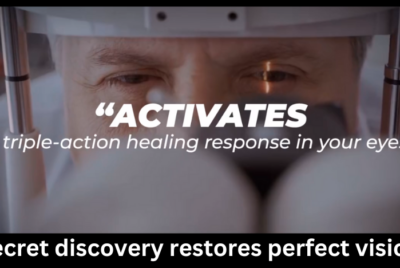How Long After Cataract Surgery Can You Drive
As a researcher and advisor on vision health, I understand the importance of a clear vision for safe driving. Cataract surgery is a common procedure aimed at restoring vision affected by cataracts, but it’s crucial to determine when it is safe to resume driving after the surgery. In this How long after cataract surgery can you drive article, we will explore the factors that influence the ability to drive after cataract surgery and provide helpful suggestions for a smooth transition back to driving.
Understanding Cataract Surgery
Cataract surgery involves removing the cloudy lens affected by cataracts and replacing it with an artificial intraocular lens (IOL). This procedure helps improve vision and enhances the quality of life for individuals experiencing vision loss due to cataracts.
Recovery Period After Cataract Surgery
The recovery period after cataract surgery typically spans a few weeks. During this time, it is essential to follow the post-operative instructions provided by your surgeon. Let’s discuss the different stages of the recovery period:
Immediate Post-Surgery Period
Immediately after cataract surgery, it is common to experience blurred vision, mild discomfort, and sensitivity to light. The eye may also be covered with a protective shield or patch. It’s important to rest and avoid strenuous activities during this time to promote proper healing.
Follow-Up Appointments
Your surgeon will schedule several follow-up appointments to monitor your progress and ensure that the eye is healing as expected. These appointments allow the surgeon to assess your vision improvement and determine when it is safe to resume driving.
Factors Influencing The Ability To Drive After Cataract Surgery
Several factors contribute to determining when you can safely drive after cataract surgery. These factors include:
Vision Improvement Timeline
The rate at which your vision improves after cataract surgery varies among individuals. While some people experience significant improvement within a few days, others may take a couple of weeks to notice substantial changes. It is essential to have a stable and clear vision before considering driving.
Healing And Stabilization Of The Eye
The eye needs time to heal and stabilize after cataract surgery. During this period, allowing the eye to fully recover before engaging in activities that require clear vision, such as driving, is crucial. Rushing the healing process can lead to complications and jeopardize your safety on the road.
Individual Healing Process
Each person’s healing process is unique. Factors such as age, overall health, and the presence of other eye conditions can influence the speed of recovery. It is important to consult with your eye surgeon and follow their recommendations to ensure a safe transition back to driving.
Guidelines For Driving After Cataract Surgery
To determine when it is safe to drive after cataract surgery, it is essential to follow these guidelines:
Consultation With The Eye Surgeon
Before considering driving, schedule a consultation with your eye surgeon. They will evaluate your healing progress, perform visual tests, and provide personalized recommendations based on your specific case.
Meeting Visual Requirements For Driving
To drive safely, you must meet the visual requirements set by your local transportation authority. This typically involves having a certain level of visual acuity and depth perception. Ensure that your vision meets these requirements before getting behind the wheel.
Ensuring Comfort And Safety While Driving
Consider your comfort and safety while driving. If you experience discomfort, glare, or difficulty focusing, it may be wise to postpone driving until your vision stabilizes further. Your safety and the safety of others on the road should be your top priority.
Determining Readiness To Drive After Cataract Surgery
Several factors can help determine your readiness to drive after cataract surgery. These factors include:
Vision Test Results
The results of visual tests conducted during follow-up appointments play a vital role in assessing your ability to drive. These tests measure your visual acuity, depth perception, and other factors necessary for safe driving.
Depth Perception And Glare Sensitivity
Depth perception and glare sensitivity are critical aspects of safe driving. After cataract surgery, your ability to judge distances accurately and handle glare from oncoming headlights should be evaluated to ensure a safe driving experience.
Consideration Of The Operated Eye And Other Eye Conditions
If you have had cataract surgery in one eye, consider how your operated eye interacts with your non-operated eye. Also, consider any other existing eye conditions that may impact your driving ability.
Additional Precautions For Safe Driving Post-Cataract Surgery
Even after you receive clearance to drive following cataract surgery, it is essential to take additional precautions to ensure your safety:
Use Of Sunglasses
Wearing sunglasses with appropriate UV protection can help reduce glare and enhance visual comfort while driving, especially during sunny days.
Gradual Increase In Driving Duration
Initially, limit the duration of your driving trips and gradually increase them as your comfort and confidence improve. This approach allows you to assess how well you adapt to driving after cataract surgery.
Avoiding Night Driving Initially
Night driving can pose additional challenges, such as decreased visibility and increased glare. It may be prudent to avoid driving at night until you are fully confident in your vision and ability to handle nighttime conditions.
Regular Eye Exams
Continuing to have regular eye exams after cataract surgery is crucial. These exams help monitor your overall eye health and ensure that your vision remains optimal for driving.
Conclusion
Cataract surgery is a life-changing procedure that can significantly improve your vision. When it comes to driving after cataract surgery, it is essential to prioritize your safety and follow the guidance of your eye surgeon. By considering the factors influencing the ability to drive and following the guidelines provided, you can ensure a smooth transition back to driving with confidence.
Frequently Asked Questions (FAQs)
Can I drive immediately after cataract surgery?
Driving immediately after cataract surgery is not recommended due to blurry vision and sensitivity to light experienced during the initial recovery period.
How long does it take for vision to stabilize after cataract surgery?
Vision stabilization varies among individuals but generally occurs within a few weeks after surgery. However, following your surgeon’s advice and waiting until your vision is stable before driving is crucial.
What should I do if I experience discomfort or difficulty focusing while driving after cataract surgery?
If you experience discomfort or difficulty focusing while driving after cataract surgery, it is best to postpone driving until your vision improves. Consult with your eye surgeon for further guidance.
Are there any restrictions on driving at night after cataract surgery?
Initially, it is advisable to avoid night driving after cataract surgery due to decreased visibility and increased glare. Once your vision has stabilized and you feel comfortable, you can gradually resume night driving.
How often should I have eye exams after cataract surgery?
Regular eye exams are crucial after cataract surgery to monitor your eye health and ensure optimal vision for driving. Consult with your eye care professional to determine the appropriate frequency of follow-up exams.





